
Cocos Island: A Hidden Gem in Guam
Discover Cocos Island in Guam: Pristine beaches, vibrant marine life, and rich history await on this peaceful retreat in the heart of the Pacific.
Cocos Island is a small, enchanting island located off the southern coast of Guam. It is known for its pristine beaches, lush greenery, and crystal-clear waters. The island offers a peaceful retreat for those looking to escape the hustle and bustle of daily life. Visitors can enjoy a variety of activities, from snorkeling and diving to simply relaxing on the beach and soaking up the sun. The island is part of the larger Cocos Lagoon, which is home to a diverse array of marine life. Snorkelers and divers will be thrilled by the vibrant coral reefs and the chance to see colorful fish, sea turtles, and even the occasional shark. For those who prefer to stay above water, kayaking and paddleboarding are popular options, offering a unique way to explore the lagoon's calm waters. Cocos Island also has a rich history, with remnants of World War II structures scattered across the island. History buffs will enjoy exploring these relics and learning about the island's past. Additionally, the island is a haven for birdwatchers, with many species of birds making their home in the island's lush vegetation. Whether you're an adventure seeker or simply looking to unwind, Cocos Island offers something for everyone.
Local tips in Cocos Island
- Bring reef-safe sunscreen to protect the coral reefs and marine life.
- Pack plenty of water and snacks, as amenities on the island can be limited.
- Wear water shoes for protection while exploring the rocky areas and reefs.
- Check the weather forecast before visiting, as boat trips may be affected by rough seas.
- Bring a waterproof camera to capture the stunning underwater scenery.
Cocos Island: A Hidden Gem in Guam
Cocos Island is a small, enchanting island located off the southern coast of Guam. It is known for its pristine beaches, lush greenery, and crystal-clear waters. The island offers a peaceful retreat for those looking to escape the hustle and bustle of daily life. Visitors can enjoy a variety of activities, from snorkeling and diving to simply relaxing on the beach and soaking up the sun. The island is part of the larger Cocos Lagoon, which is home to a diverse array of marine life. Snorkelers and divers will be thrilled by the vibrant coral reefs and the chance to see colorful fish, sea turtles, and even the occasional shark. For those who prefer to stay above water, kayaking and paddleboarding are popular options, offering a unique way to explore the lagoon's calm waters. Cocos Island also has a rich history, with remnants of World War II structures scattered across the island. History buffs will enjoy exploring these relics and learning about the island's past. Additionally, the island is a haven for birdwatchers, with many species of birds making their home in the island's lush vegetation. Whether you're an adventure seeker or simply looking to unwind, Cocos Island offers something for everyone.
When is the best time to go to Cocos Island?
Iconic landmarks you can’t miss
Two Lover’s Point
Discover the breathtaking views and romantic legends at Two Lover's Point, a must-visit attraction in Guam for unforgettable memories.
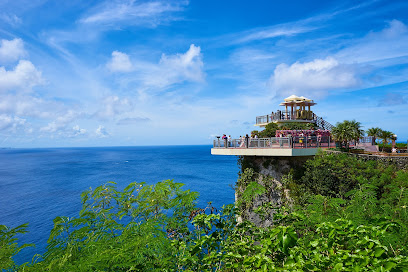
Inarajan Natural Pool
Explore the enchanting Inarajan Natural Pool in Guam, a serene escape for swimming, snorkeling, and discovering the island's natural beauty.
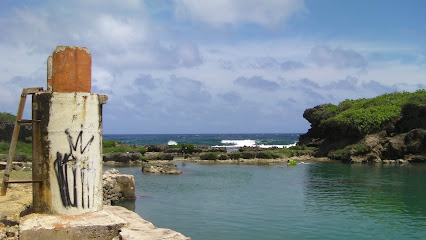
Jeff's Pirates Cove
Experience the flavors of Guam at Jeff's Pirates Cove, where delicious grilled cuisine meets breathtaking ocean views in a tropical paradise.
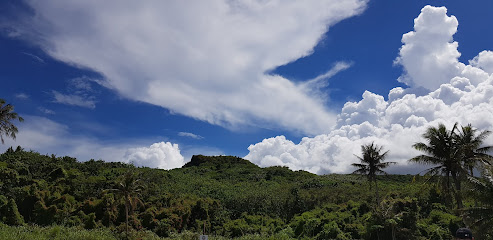
Plaza de España
Experience Guam's rich history and vibrant culture at Plaza de España, the heart of Hagåtña's historical landscape.
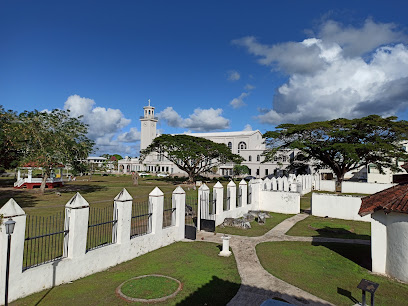
Fort Nuestra Señora de la Soledad
Explore the rich history and breathtaking views at Fort Nuestra Señora de la Soledad, Guam's hidden gem of a historical site.
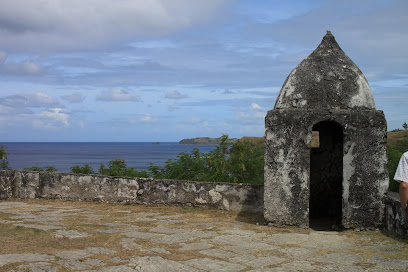
Merizo Pier Park
Explore the natural beauty and serene atmosphere of Merizo Pier Park in Guam, a perfect destination for relaxation and adventure on the Pacific coast.
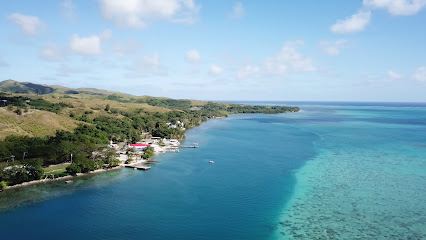
Cetti Bay Overlook
Explore the stunning vistas of Cetti Bay Overlook, a breathtaking hiking area in Guam that showcases nature's beauty at its finest.
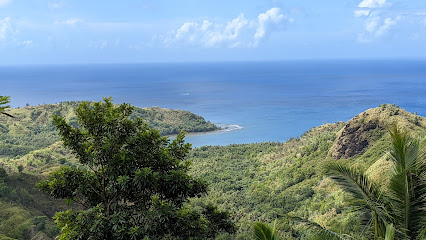
Ritidian Point
Explore the tranquility of Ritidian Point, a stunning wildlife refuge in Guam, perfect for nature lovers and peaceful beach enthusiasts.
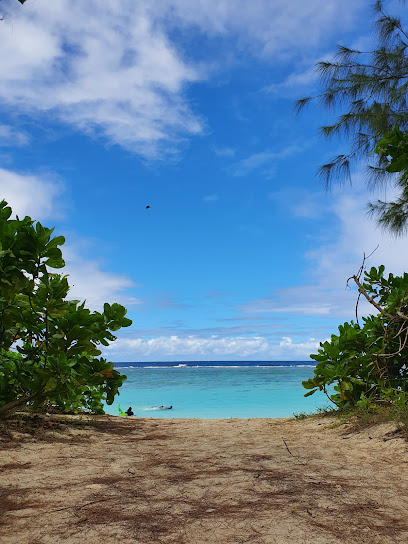
Antonio B. Won Pat International Airport
Discover the vibrant gateway to Micronesia at Antonio B. Won Pat International Airport, your starting point for an unforgettable Guam adventure.
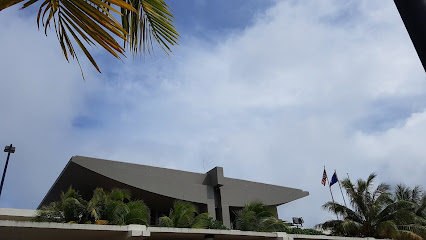
Guam
Explore Guam: A Tropical Paradise with Stunning Beaches, Rich Culture, and Endless Adventure Awaiting Every Traveler.
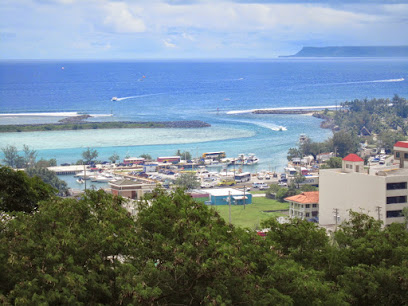
Karera at SandCastle
Discover the vibrant theater scene at Karera at SandCastle in Tumon, Guam, where captivating performances and culinary delights await every visitor.
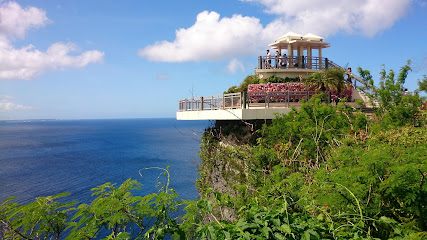
American Grocery
Explore the vibrant flavors of Guam at American Grocery, your go-to destination for local treats and culinary delights.
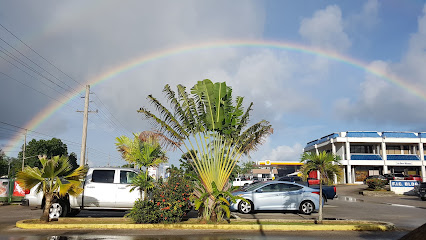
Fort Santa Agueda
Discover the rich history and stunning views at Fort Santa Agueda, a historic landmark that showcases Guam's colonial past and natural beauty.
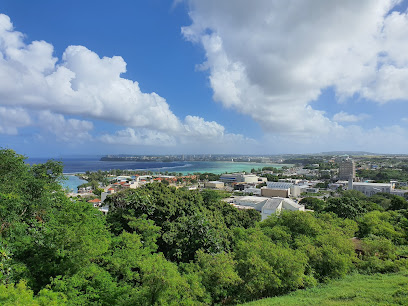
Wyndham Garden Guam
Discover comfort and convenience at Wyndham Garden Guam, your ideal base for experiencing the beauty and culture of this tropical paradise.

Orote Commissary
Discover Orote Commissary in Apra Harbor, Guam – the ideal grocery store for tourists seeking local flavors and essentials at great prices.
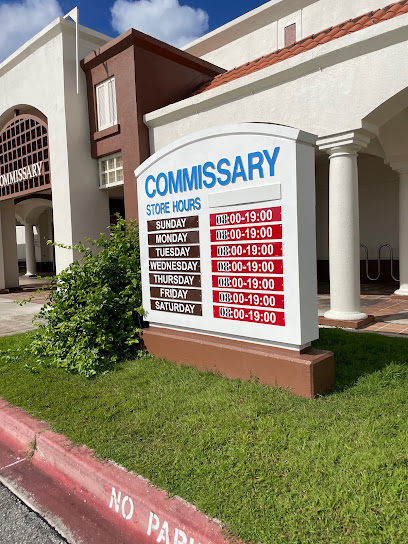
Essential places to dine
Dusit Thani Guam Resort
Discover unparalleled luxury at Dusit Thani Guam Resort—your gateway to an unforgettable tropical escape filled with relaxation and adventure.

The Beach Restaurant & Bar Guam
Experience fresh grilled delights and refreshing drinks with breathtaking ocean views at The Beach Restaurant & Bar in Guam.
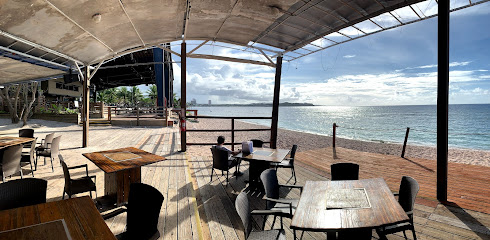
Jeff's Pirates Cove
Experience mouthwatering grilled dishes with stunning ocean views at Jeff's Pirates Cove in Guam.
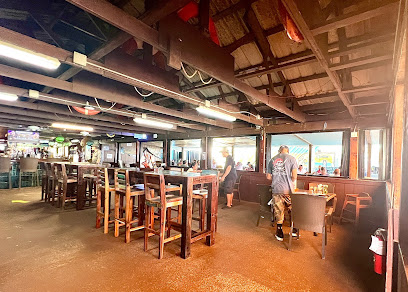
Proa Restaurant
Experience authentic Chamorro cuisine at Proa Restaurant in Tumon, Guam - where local flavors meet tropical hospitality.
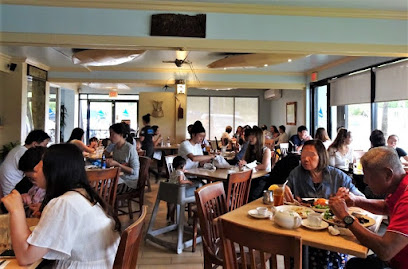
Mosa's Joint
Experience the vibrant flavors of Guam at Mosa's Joint - home to delicious burgers and local delicacies.
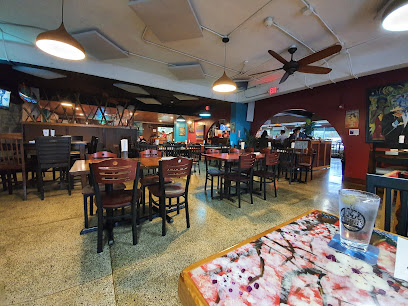
LEOPALACE RESORT GUAM
Discover unparalleled luxury and adventure at Leopalace Resort Guam—your ultimate escape in paradise.

Beachin' Shrimp Flame Tree Plaza
Experience Guam's vibrant culinary scene at Beachin' Shrimp in Flame Tree Plaza – where fresh seafood meets friendly service.
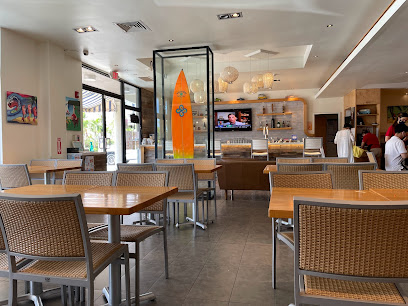
Pika's Cafe
Discover Pika's Cafe in Upper Tumon - where fresh local flavors meet warm hospitality for an unforgettable dining experience.
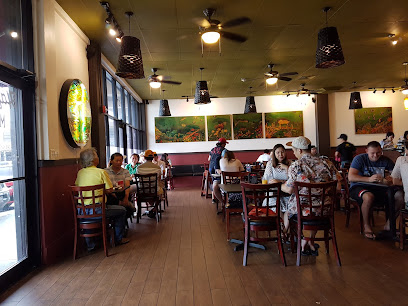
The Kracked Egg
Discover delicious breakfast and brunch at The Kracked Egg in Tumon, Guam - where fresh ingredients meet local flavors.
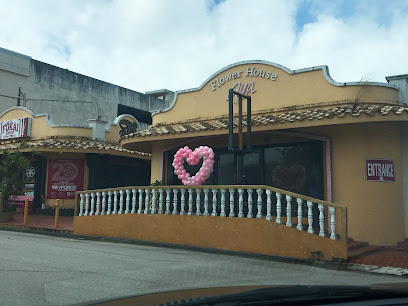
Jamaican Grill
Discover authentic Jamaican cuisine in Tamuning at Jamaican Grill - where every dish tells a story and every bite is full of flavor.
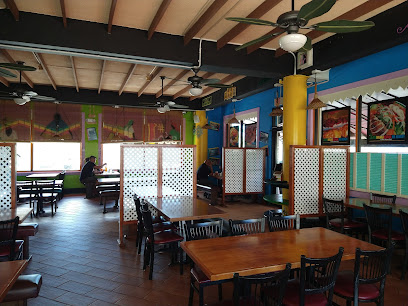
Tasi Grill
Experience exquisite dining at Tasi Grill in Tumon - where local flavors meet breathtaking ocean views for an unforgettable meal.
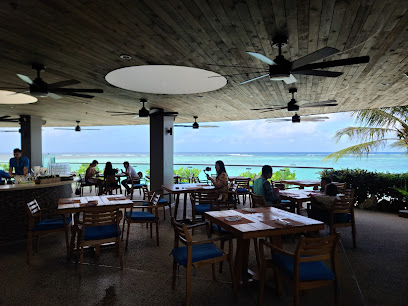
Alfredo's Steakhouse
Experience the finest steaks and exquisite dining at Alfredo's Steakhouse in Tumon, Guam - a must-visit for food lovers.
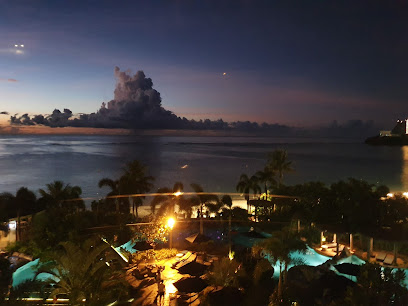
Café Kitchen
Discover family-friendly dining at Café Kitchen in Tumon, where delicious meals meet warm hospitality amidst Guam's vibrant atmosphere.
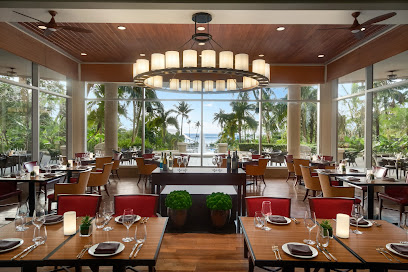
Palm Cafe
Discover the flavors of Guam at Palm Cafe—where breathtaking views meet exquisite cuisine in Tumon Bay.
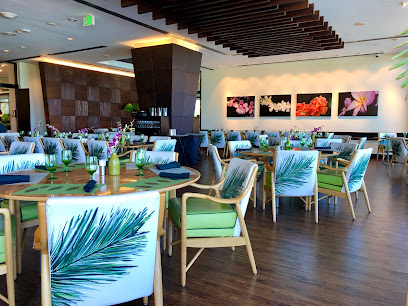
Top Island Restaurant
Experience the vibrant flavors of authentic Chinese cuisine at Top Island Restaurant in Guam, where every dish tells a story.
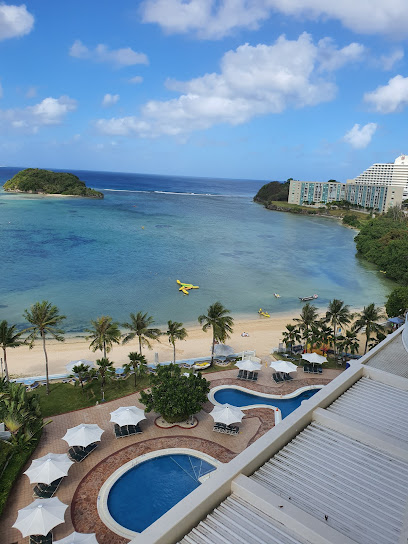
Markets, malls and hidden boutiques
Shop 4 Less
Discover a diverse array of products at Shop 4 Less, your go-to general store in Mongmong, Guam, perfect for tourists and locals alike.
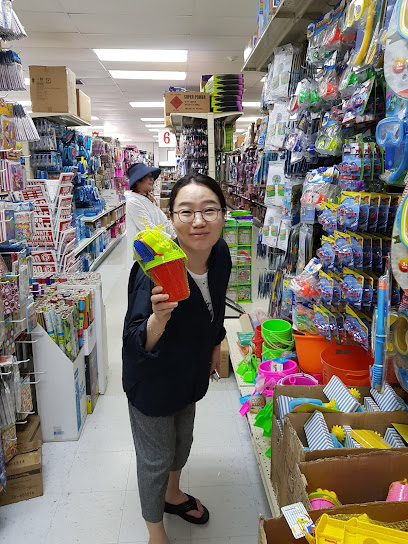
SM Island Guam
Explore SM Island Guam: A vibrant department store showcasing unique local and international products in the heart of Hagåtña.

JS Store
Explore unique home goods and local craftsmanship at JS Store in Guam, a perfect shopping destination for tourists seeking charm and quality.
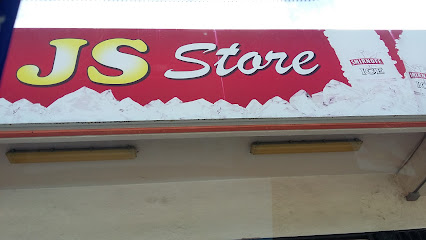
Merizo Supermarket
Experience the vibrant local culture at Merizo Supermarket in Malesso', Guam, where fresh produce and unique island flavors await every visitor.
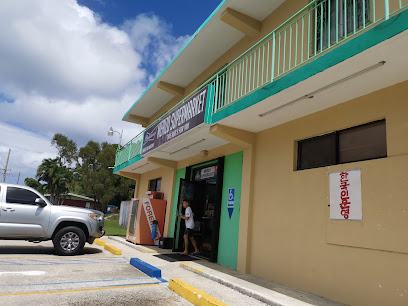
Island Clothing
Explore unique custom t-shirts and local apparel at Island Clothing in Guam, embodying the vibrant spirit of the island.
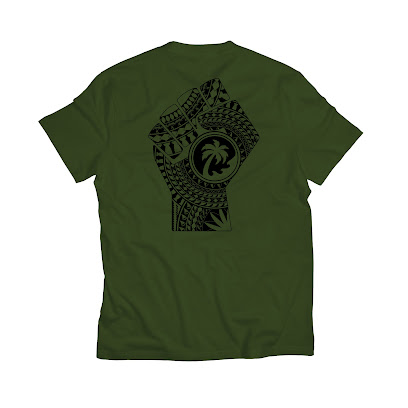
Merizo Papa Niyoc Mart
Explore the heart of Guam at Merizo Papa Niyoc Mart, a local supermarket offering fresh produce, local snacks, and a taste of island culture.

Hidden-Treasures-Thrift-Store-and-Boutique
Explore Hidden Treasures Thrift Store and Boutique in Guam for unique clothing finds and sustainable shopping experiences.
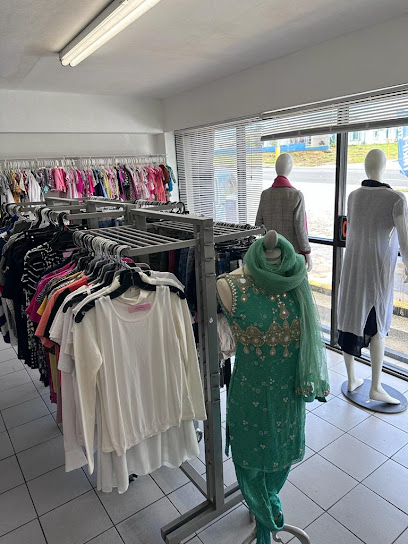
Twinkles
Discover a delightful collection of toys and unique gifts at Twinkles in Apotgan, Guam – the perfect stop for souvenirs and local treasures.
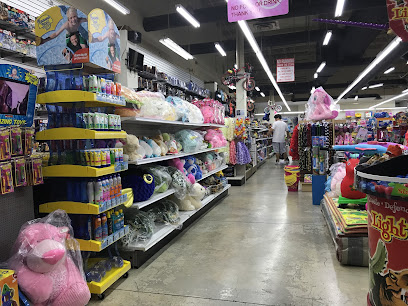
JP Store
Explore JP Store in Tumon for a unique shopping experience featuring trendy apparel and local souvenirs that capture Guam's vibrant spirit.
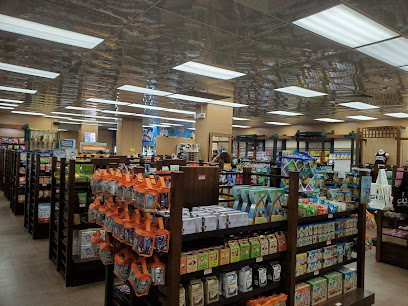
Threads Guam
Discover Threads Guam, where unique fashion meets the vibrant spirit of the island, perfect for stylish travelers seeking local flair.
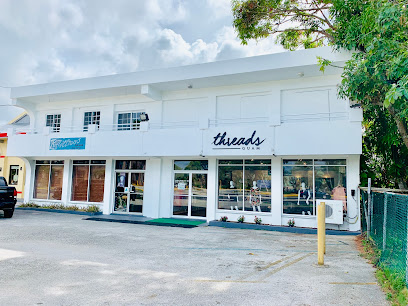
Hong Kong Center
Explore a treasure trove of unique gifts and local crafts at Hong Kong Center in Mongmong, Guam, where every item tells a story.
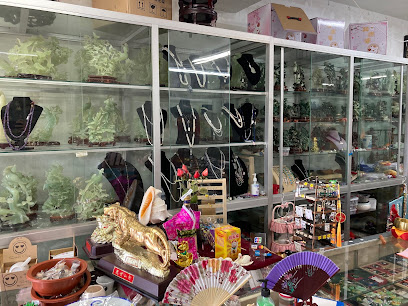
TROPICAL T-SHIRTS
Discover unique T-shirts that capture the spirit of Guam at Tropical T-Shirts in Micronesia Mall, a perfect spot for souvenir shopping.
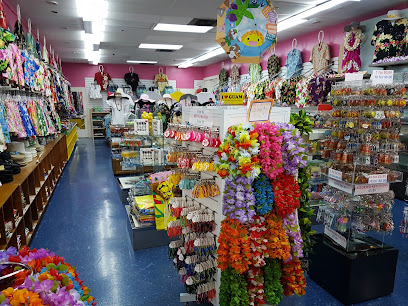
C-one Store
Discover C-one Store in Barrigada, Guam for an unbeatable selection of party supplies, decorations, and accessories at competitive prices.

Espinosa Fruit Stand
Discover the vibrant flavors of Guam at Espinosa Fruit Stand, your go-to spot for fresh, locally sourced fruits and vegetables.
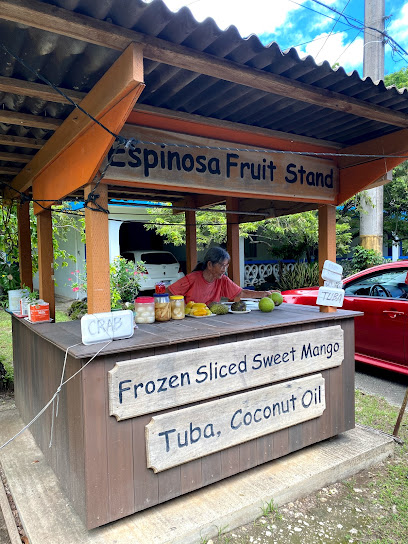
Guam Cultural Center
Explore the Guam Cultural Center for authentic souvenirs and a glimpse into the rich heritage of Guam’s vibrant culture.
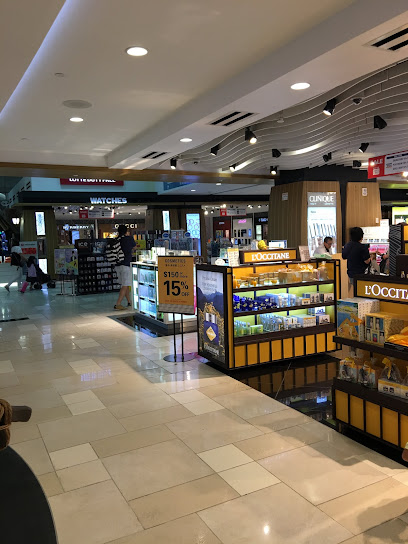
Essential bars & hidden hideouts
The Beach Restaurant & Bar Guam
Discover the ultimate beachfront dining experience at The Beach Restaurant & Bar in Guam, where stunning views meet delicious grill specialties.

Jeff's Pirates Cove
Experience the vibrant flavors and breathtaking views at Jeff's Pirates Cove, a grilling paradise in Guam's tropical haven.
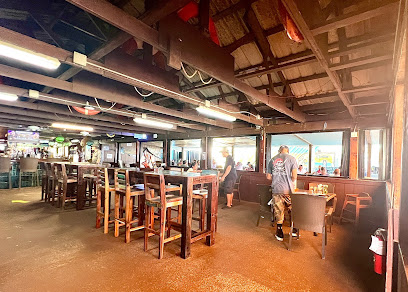
Jimmy Dee's Paradise Beach Resort & Bar
Experience the tropical paradise of Jimmy Dee's Beach Bar in Guam, where refreshing cocktails and stunning ocean views create unforgettable memories.

Green Lizzard Tiki Bar
Discover the tropical vibes and lively atmosphere at Guam's Green Lizzard Tiki Bar, where unique cocktails and live music await.
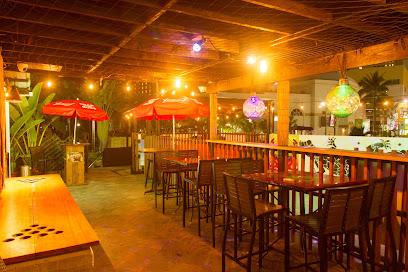
The Guam Brewery Taphouse
Experience the vibrant craft beer culture and delicious pub fare at The Guam Brewery Taphouse in Tumon, Guam.
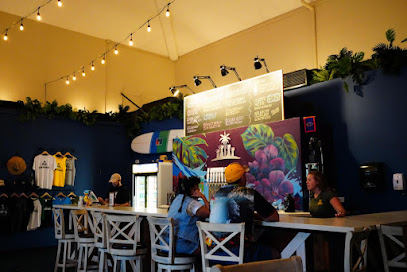
Bernie's Bar
Experience the vibrant nightlife at Bernie's Bar in Apotgan, Guam, where delicious drinks and friendly vibes await.
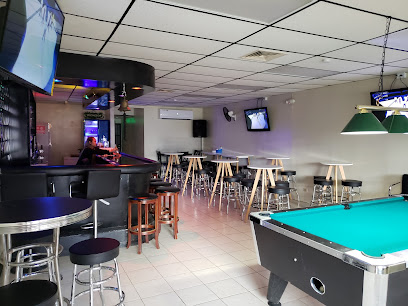
Kave’s
Kave's - Experience the vibrant nightlife of Guam at this lively sports bar, featuring delicious food, refreshing drinks, and exciting events.
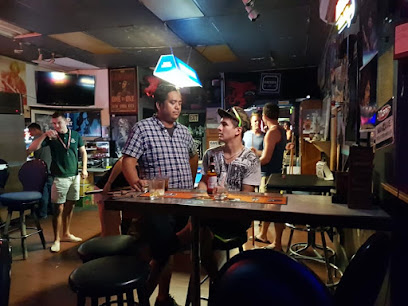
The Venue
Experience the vibrant nightlife of Hagåtña at The Venue, a lively bar offering craft cocktails, local brews, and unforgettable entertainment in Guam.
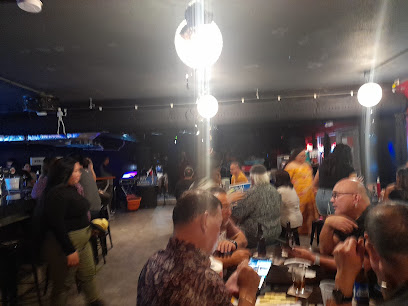
Old Traditions
Experience the vibrant nightlife of Guam at Old Traditions, where local brews and cocktails meet live entertainment in a cultural hotspot.
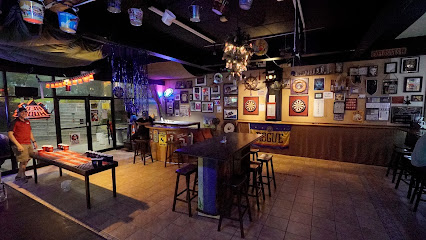
Mins Bar Guam | Music Karaoke Box and Shot Bar | Tumon Guam
Experience the ultimate karaoke and nightlife at Mins Bar Guam, where music meets a vibrant atmosphere in Tumon.

Wild Bills
Discover Wild Bills, Guam's ultimate bar experience with vibrant nightlife, delicious drinks, and a welcoming atmosphere for all visitors.
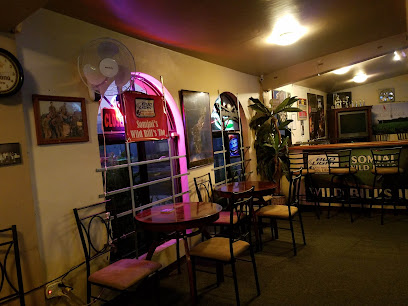
Livehouse
Experience the vibrant nightlife of Guam at Livehouse, where live music meets refreshing drinks in a stylish setting.
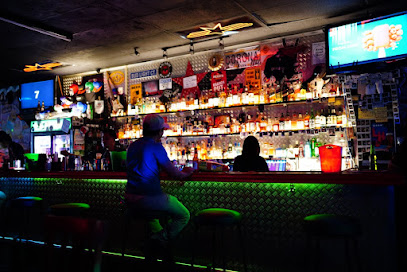
Skyline Resto-Pub
Experience the lively spirit of Guam at Skyline Resto-Pub, where great food and drinks meet a vibrant atmosphere.
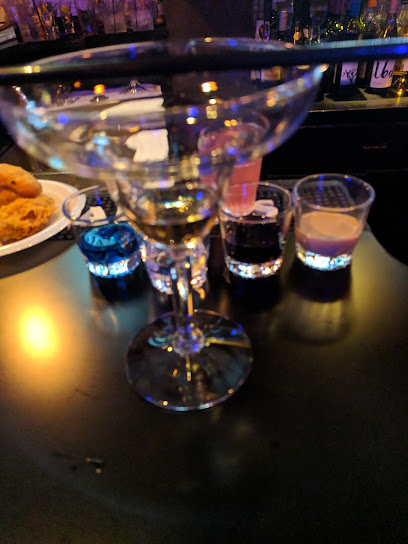
Toy’s Tavern
Experience the vibrant nightlife at Toy's Tavern in Apotgan, Guam - a cozy dive bar where locals and tourists connect over great drinks and good times.
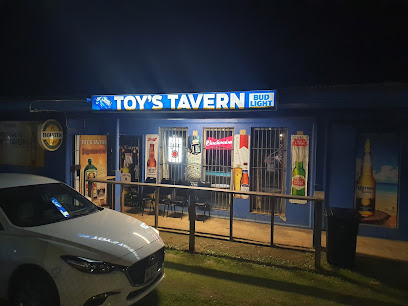
Pit In Karaoke Bar & Lounge
Discover the lively nightlife of Guam at Pit In Karaoke Bar & Lounge, where you can sing, laugh, and unwind with friends in a vibrant atmosphere.
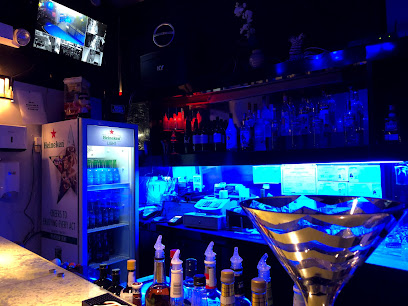
Local Phrases about Cocos Island
-
- HelloHåfa adai
[HAH-fah ah-DIE] - GoodbyeAdios
[ah-DEE-ohs] - YesHåo
[HAH-oh] - NoTi
[TEE] - Please/You're welcomePor fabor
[POHR fah-BOHR] - Thank youSi Yu'us ma'åse
[SEE YOO-oos mah-AH-seh] - Excuse me/SorryDispensa
[dees-PEN-sah] - How are you?Ña'lå'la'?
[NYAH-lah-lah] - Fine. And you?Må'åse. Lao hu?
[mah-AH-seh. la-oh hoo] - Do you speak English?Kao siña hao i masahåfa?
[kow SEE-nyah how ee mah-sah-HAH-fah] - I don't understandTi hu tungo'
[TEE hoo TOONG-oh]
- HelloHåfa adai
-
- I'd like to see the menu, pleaseLao'ånao hao i menu, por fabor
[la-oh-AHN-ow how ee MEH-noo, pohr fah-BOHR] - I don't eat meatTi hao inasángå
[TEE how ee-nah-SAHN-gah] - Cheers!Biba!
[BEE-bah] - I would like to pay, pleaseLao'ånao hao i deña, por fabor
[la-oh-AHN-ow how ee DEHN-yah, pohr fah-BOHR]
- I'd like to see the menu, pleaseLao'ånao hao i menu, por fabor
-
- Help!Ayuda!
[ah-YOO-dah] - Go away!Ha'a'i!
[HAH-ee] - Call the Police!Mandåtlo i Polisia!
[mahn-DAHT-lo ee poh-LEE-syah] - Call a doctor!Mandåtlo i manåyi!
[mahn-DAHT-lo ee mah-NAH-yee] - I'm lostTi hu manmimata'åsi
[TEE hoo mahn-mee-mah-TAH-see] - I'm illTi hu sakit
[TEE hoo sah-KEET]
- Help!Ayuda!
-
- I'd like to buy...Lao'ånao hao i...
[la-oh-AHN-ow how ee...] - I'm just lookingLao'ånao hao manmanu
[la-oh-AHN-ow how mahn-MAH-noo] - How much is it?Kåo na'ånge'?
[KOW nah-AHN-geh] - That's too expensiveKao mafaña
[kow mah-FAHN-yah] - Can you lower the price?Kao setbia gi prisu?
[kow set-BEE-ah gee PREE-soo]
- I'd like to buy...Lao'ånao hao i...
-
- What time is it?Ki tiempo na?
[kee tee-YEM-po nah] - It's one o'clockMåpat na i tåsi
[mah-PAHT nah ee TAH-see] - Half past (10)Måguadu na (10)
[mah-GWAH-doo nah (ten)] - MorningGof ma'åse
[gohf mah-AH-seh] - AfternoonGinen ma'åse
[gee-nen mah-AH-seh] - EveningTano' ma'åse
[TAH-noh mah-AH-seh] - YesterdayÑå'an i kalan
[NYAH-ahn ee KAH-lahn] - TodayI tåno'
[ee TAH-noh] - TomorrowBåtgu i kalan
[BAHT-goo ee KAH-lahn] - 1Måpat
[mah-PAHT] - 2Måttot
[mah-TOTE] - 3Målu
[mah-LOO] - 4Måfat
[mah-FAHT] - 5Målima
[mah-LEE-mah] - 6Månom
[mah-NOHM] - 7Måfiti
[mah-FEE-tee] - 8Måsågui
[mah-SAH-gwee] - 9Månuebi
[mah-NOO-eh-bee] - 10Måpågue'
[mah-PAH-gweh]
- What time is it?Ki tiempo na?
-
- Where's a/the...?Kiha i...
[KEE-hah ee...] - What's the address?Kiha i direksion?
[KEE-hah ee dee-rek-see-ohn] - Can you show me (on the map)?Kao güina hao (gi map)?
[kow GWEEN-ah how (gee map)] - When's the next (bus)?Ki tiempo i siguiente (guma)?
[kee tee-YEM-po ee see-GWEN-teh (GOO-mah)] - A ticket (to ....)Un biahe (para ...)
[oon BYAH-heh (PAH-rah)]
- Where's a/the...?Kiha i...
History of Cocos Island
-
Cocos Island, part of the larger island of Guam, was originally settled by the Chamorro people over 4,000 years ago. The Chamorro culture, rich in maritime skills, agriculture, and unique traditions, left a lasting imprint on the island. The early Chamorro people lived in extended family groups and constructed latte stone pillars, which served as the foundations for their homes. These pillars are still visible today and remain an important symbol of Chamorro heritage.
-
In 1521, the Portuguese explorer Ferdinand Magellan arrived in Guam while sailing under the Spanish flag, marking the beginning of European contact. By 1565, Guam and Cocos Island became part of the Spanish Empire. The Spanish colonial period lasted for over 300 years, significantly influencing the local culture, language, and religion. Catholicism was introduced, and many Chamorro traditions were adapted to fit the new colonial context. The island served as a crucial stopover for the Manila Galleons, Spanish trading ships that sailed between Mexico and the Philippines.
-
Following the Spanish-American War in 1898, Guam was ceded to the United States under the Treaty of Paris. Cocos Island, being part of Guam, thus came under American control. The U.S. Naval Administration took over the island, leading to modernization efforts and the introduction of American customs and governance. This period also saw the establishment of military installations and increased strategic importance for Guam and its surrounding islands, including Cocos Island.
-
During World War II, Guam was captured by Japanese forces in December 1941, and the island remained under Japanese occupation until the Battle of Guam in 1944. Cocos Island played a strategic role during this period, witnessing both conflict and occupation. Japanese forces constructed bunkers and other fortifications in anticipation of Allied attacks. The island endured hardships, including forced labor and severe restrictions on the local population.
-
After World War II, Guam and Cocos Island were liberated by American forces. The post-war era saw significant investments in infrastructure, tourism, and economic development. Cocos Island transformed into a popular tourist destination, known for its natural beauty, clear waters, and vibrant marine life. The island became a hub for recreational activities such as snorkeling, diving, and eco-tourism, attracting visitors from around the world.
-
Today, Cocos Island continues to celebrate its rich historical and cultural heritage while embracing modernity. Efforts have been made to preserve Chamorro traditions, including language revitalization programs and cultural festivals. The island is a living museum, where visitors can explore ancient latte stones, Spanish colonial ruins, and World War II relics. Modern amenities coexist with historical sites, providing a unique experience that blends the old with the new.
Cocos Island Essentials
-
Cocos Island is located approximately 1.6 miles off the southern coast of Guam. The most common way to reach Cocos Island is by taking a ferry from Merizo Village. The ferry service operates regularly, with trips taking about 10-15 minutes. Additionally, there are private boat charters available for a more personalized journey to the island.
-
Once on Cocos Island, transportation options are limited due to its small size. Most visitors explore the island on foot or by renting bicycles. For those interested in water activities, various tour operators offer boat rentals, snorkeling gear, and other equipment. There are no public transportation services on the island itself.
-
The official currency on Cocos Island, as in the rest of Guam, is the US Dollar (USD). Credit cards are widely accepted at most establishments, including hotels, restaurants, and shops. However, it is advisable to carry some cash for smaller vendors or in case of technical issues with card processing. ATMs are available on the main island of Guam, but not on Cocos Island itself.
-
Cocos Island is generally a safe destination for tourists. However, as with any tourist spot, it is important to remain vigilant. Avoid leaving personal belongings unattended, especially on the beach. There are no specific high-crime areas targeting tourists, but it is always wise to stay aware of your surroundings. Pay attention to beach safety warnings, as ocean currents can be strong.
-
In case of emergency, dial 911 for immediate assistance. There are no medical facilities on Cocos Island, so in the event of a medical emergency, you will need to be transported back to the main island of Guam. It is recommended to carry a basic first aid kit and have travel insurance that covers medical emergencies. For minor health issues, there are pharmacies in Merizo Village on the main island.
-
Fashion: Do wear lightweight, breathable clothing suitable for a tropical climate. Bring swimwear for water activities. Religion: There are no specific religious sites on Cocos Island, but it is respectful to dress modestly when visiting local communities in Guam. Public Transport: Public transport is not available on Cocos Island. Plan accordingly. Greetings: Do greet locals with a friendly 'Hafa Adai,' which means 'Hello' in Chamorro. Eating & Drinking: Do try local Chamorro cuisine and accept food offerings graciously. Don't litter; always dispose of trash properly to keep the island pristine.
-
To experience Cocos Island like a local, engage with the staff and guides who often have fascinating stories and insights about the island's history and ecosystem. Participate in local activities such as traditional fishing or cooking classes if available. Respect the natural environment by adhering to conservation guidelines. Don't miss exploring the island's marine life through snorkeling or diving; the coral reefs and diverse aquatic species are a highlight.
Trending Landmarks in Cocos Island
Nearby Cities to Cocos Island
-
Things To Do in Santa Rita
-
Things To Do in Agana Heights
-
Things To Do in Sinajana
-
Things To Do in Hagåtña
-
Things To Do in Tumon
-
Things To Do in Mangilao
-
Things To Do in Tamuning
-
Things To Do in Dededo
-
Things To Do in Yigo
-
Things To Do in Koblerville
-
Things To Do in Saipan
-
Things To Do in Kagman
-
Things To Do in Garapan
-
Things To Do in Capital Hill
-
Things To Do in San Roque








